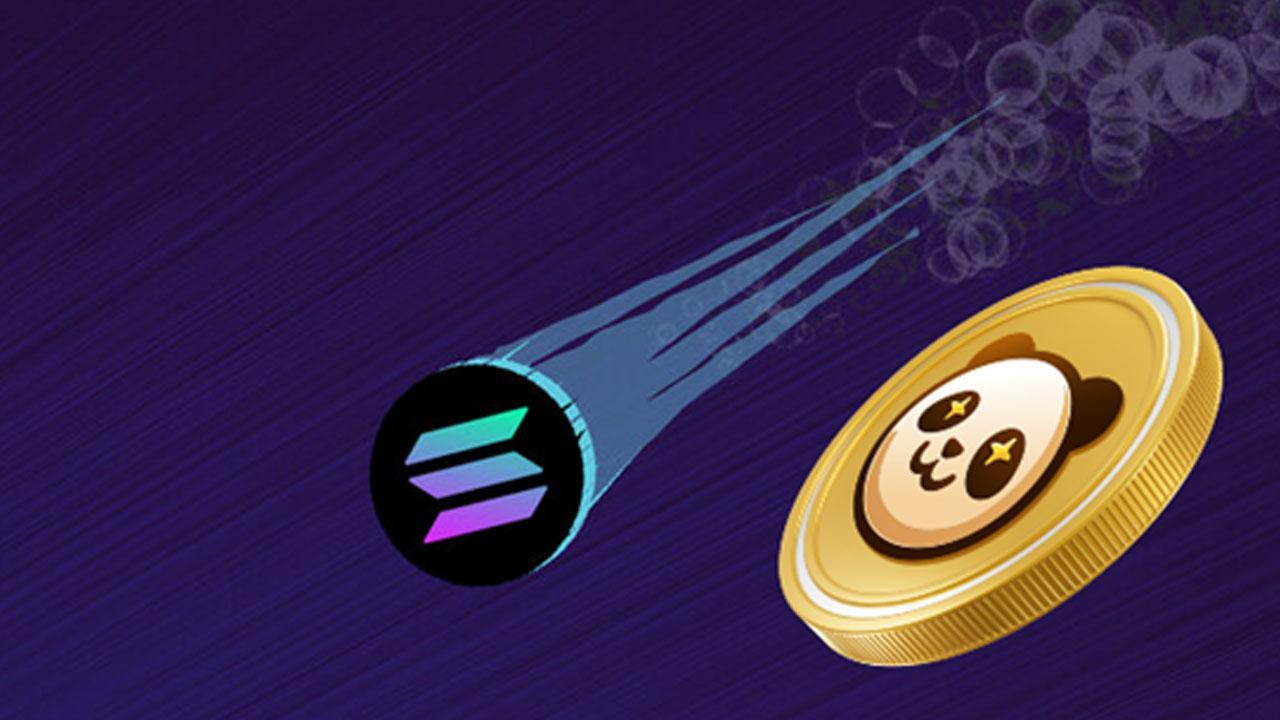Solana has cemented itself as a leading Ethereum competitor due to its blazing transaction speeds and growing array of dApps.

The cryptocurrency markets are full of speculation about which altcoin could potentially dethrone Ethereum and take over its dominant position in the industry. While several contenders like Solana, Cardano, and Polkadot often lead this conversation, a relatively unknown cryptocurrency named Pandoshi (PAMBO) has been steadily gaining traction.
ADVERTISEMENT
Pandoshi Surging Under the Radar
Valued at only $0.01 per token currently, PAMBO has flown under the radar despite its monumental 500% presale phase gains so far. However, analysts predict Pandoshi to be a breakout star of 2024 that could achieve over 1000% returns within the next bull market cycle.
"Pandoshi exhibits all the hallmarks of an altcoin prepared to capture the lucrative market share up for grabs," says a prominent crypto analyst. "Its aggressive pricing strategy combined with a robust ecosystem of products such as PandaChain, Pandoshi Wallet, PandoshiSwap puts it miles ahead of where titans like Solana were at this stage of their journey."
How Pandoshi Sets Itself Apart
So what sets Pandoshi apart from its peers? The analysts point to three key differentiating factors:
1. Hyper Deflationary Tokenomics
Unlike most cryptocurrencies, PAMBO has an aggressive token burn mechanism hardcoded into its smart contracts. A portion of the revenue generated from ecosystem products like PandoshiSwap and Cardoshi crypto cards is used to buyback and burn PAMBO tokens.
This relentless reduction of supply while demand increases makes PAMBO a deflationary asset.
2. Strong Network Effects
Pandoshi is structured as an ecosystem of interlinked products rather than just a standalone blockchain. The Pandoshi Wallet, PandaChain, and Cardoshi payment cards seamlessly integrate to provide more utility and convenience to users.
As more users flock to each of these offerings, it feeds network effects into the entire ecosystem, causing compound growth.
3. Mainstream Accessibility
Despite its capabilities, crypto is still viewed as complicated for average consumers. Pandoshi bridges this gap with beginner-friendly fiat onboarding directly through credit/debit cards.
Its upcoming Cardoshi payment cards also allow seamless crypto spending globally, providing a familiar experience to the mainstream audience.

Pandoshi vs Solana
Solana has cemented itself as a leading Ethereum competitor due to its blazing transaction speeds and growing array of dApps. However, Solana's ecosystem remains quite nuanced and technically challenging for everyday users.
Pandoshi's vision of simplifying decentralized finance for the masses combined with aggressive tokenomics makes it a serious contender to overtake Solana in the next bull market.
Pandoshi is currently concluding its final presale phase at $0.01 per token before its official launch. Given its strong positioning and the parabolic growth witnessed by other altcoins in previous bull runs, analysts project its price to realistically hit:
- $5.0 in 2024 - 5000% upside
- $50.00 by 2027 - 50000% upside
These indicators suggest early Pandoshi adopters could reap tremendous rewards over the next couple of years if its momentum continues.
Final Thoughts
As the markets gear up for the next bull run in 2024, altcoins jostling to lead the next charge have multiplied rapidly. But Pandoshi with robust utility and deflationary economics could be primed to overtake the top contenders.
PAMBO's new chain Panda Chain, makes it link with Cardoshi crypto cards solving mass adoption, with such rapid developments in product offerings, analysts firmly vouch for PAMBO to eclipse titans like Solana in short order. Nevertheless, Pandoshi’s aggressive growth promises to make it one exciting cryptocurrency to watch through 2024 and beyond.
Click Here To Buy PAMBO Tokens
Visit the links below for more information about Pandoshi (PAMBO):
Website: https://pandoshi.com/
Whitepaper: https://docs.pandoshi.com/
“Crypto products and NFTs are unregulated and can be highly risky. There may be no regulatory recourse for any loss from such transactions.”
 Subscribe today by clicking the link and stay updated with the latest news!" Click here!
Subscribe today by clicking the link and stay updated with the latest news!" Click here!







